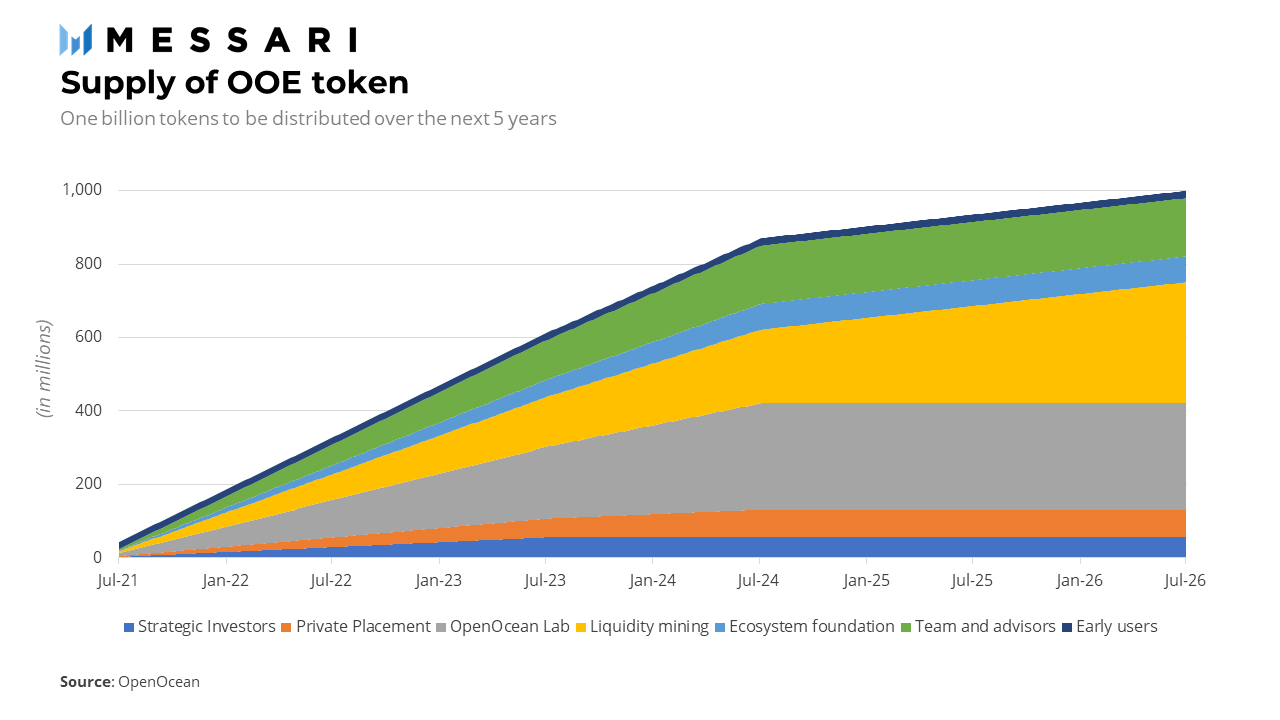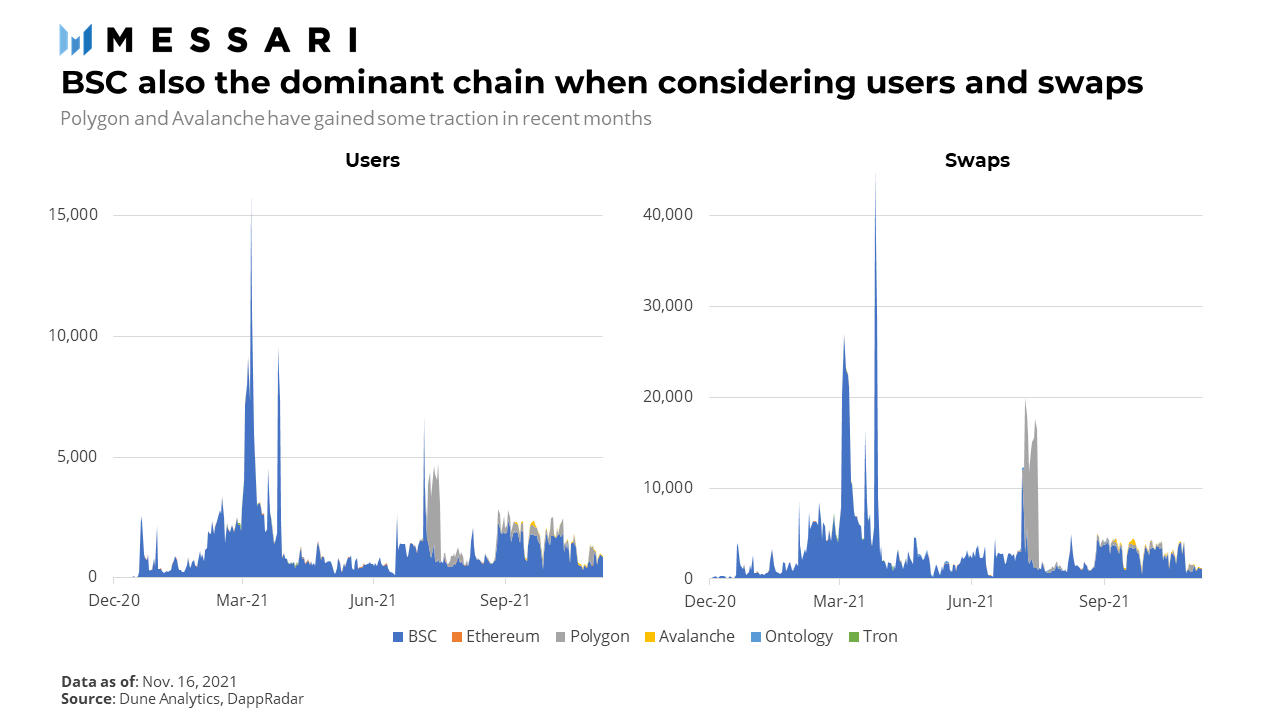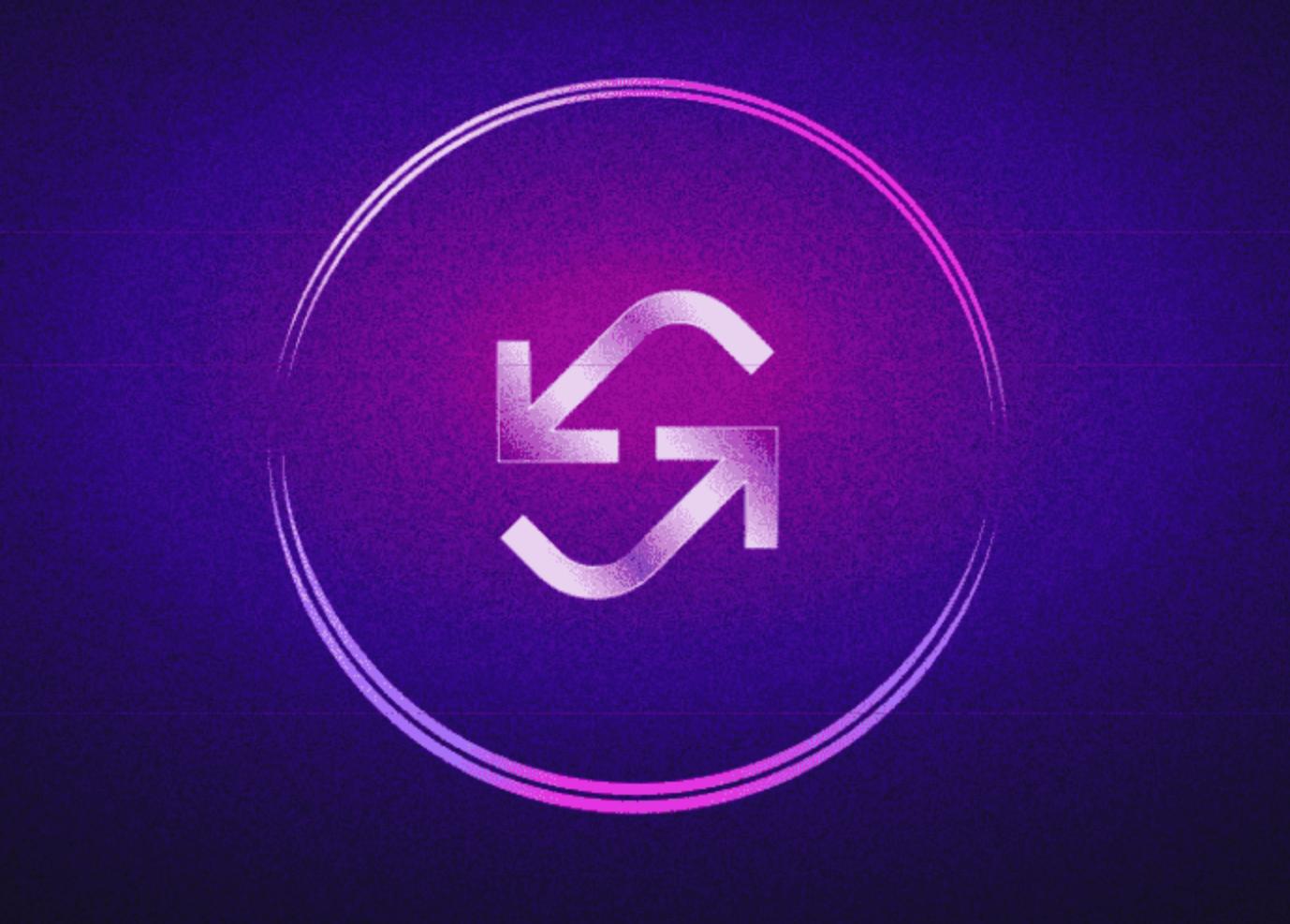Messari: A Detailed Analysis of the Product Features and Market Prospects of the CeDeFi Aggregator OpenOcean
Author: Steven Biekens
Original Title: 《An Ocean of Liquidity: OpenOcean and the Quest to Become the CeDeFi Aggregator》
Translation by: Hu Tao, Chain Catcher
A common problem faced by crypto traders is fragmented liquidity and asymmetric market information, leading to inefficient trading. Aggregators aim to solve this issue by providing access to multiple sources of liquidity in one place. Through algorithms, aggregators route orders across various exchanges to find the best prices while considering slippage, fees, and gas costs. This is not just about aggregating trading liquidity but also includes other financial services, such as derivatives.
In addition to trading, liquidity aggregators can also assist with other financial services. For example, when you want to enter the futures market or lend crypto assets, aggregators can find the best positions or rates across different platforms. Currently, almost all aggregators focus on decentralized markets. But imagine a single platform where users can access financial services from both DeFi and CeFi markets. This is the vision that OpenOcean is building.
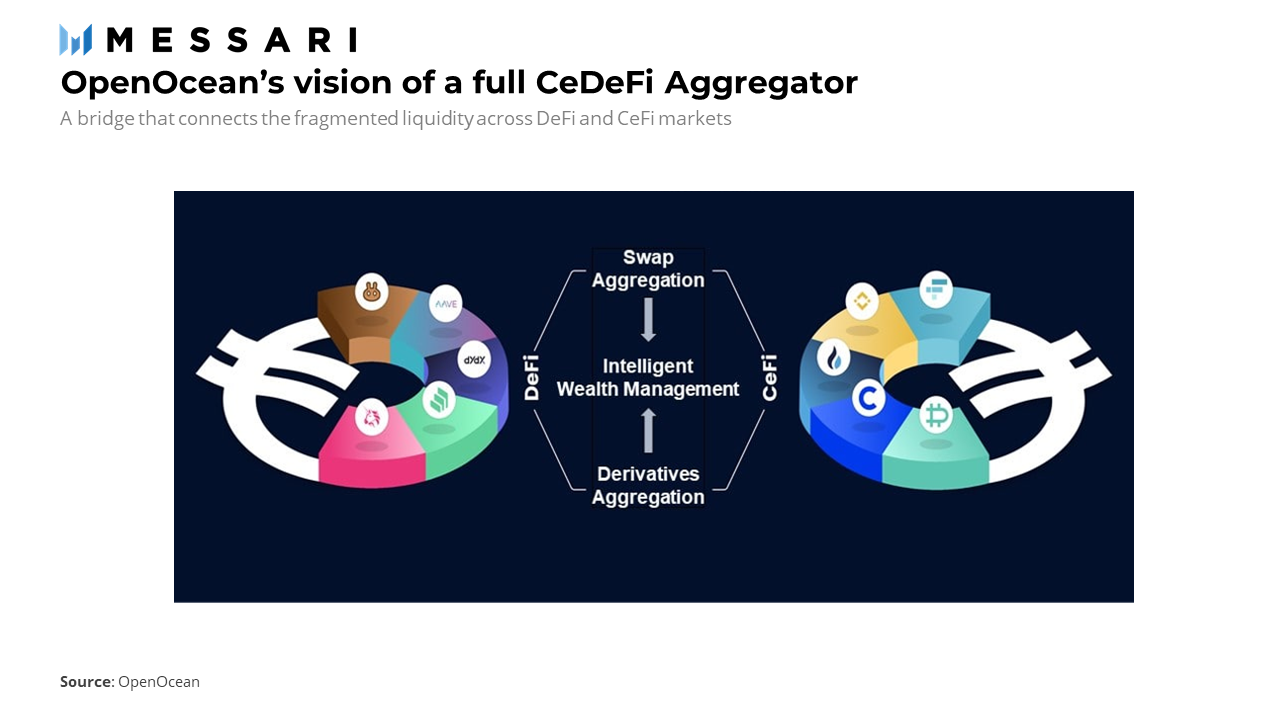
What is OpenOcean?
OpenOcean aims to be a liquidity aggregator across centralized and decentralized markets as well as across blockchains. Currently, OpenOcean aggregates asset trading but also plans to expand into other services, such as derivatives and asset management services. Its ultimate goal is to become a one-stop shop for obtaining comprehensive crypto liquidity.
OpenOcean was launched in September 2020. The protocol is currently deployed on 13 public networks, including Ethereum, Binance Smart Chain (BSC), xDai (also known as Gnosis Chain), Avalanche, Polygon, Solana, and Ethereum Layer 2 solutions (Arbitrum and Loopring). OpenOcean connects to one centralized exchange: Binance.
In March 2021, OpenOcean completed a $2 million strategic funding round led by Binance, which included Multicoin Capital, LD Capital, CMS, Kenetic, and Altonomy. Huobi Ventures Blockchain Fund also made a strategic investment in OpenOcean in July 2021.
How Does OpenOcean Work?
Optimizing the best trading rates is the essence of an aggregator. The core of OpenOcean is a routing algorithm that optimizes multiple parameters, including better prices, lower gas consumption, and reduced slippage. OpenOcean's aggregation protocol retrieves quotes from all exchanges and then finds the most optimal trading routes with low slippage.
To find the initial trading routes, OpenOcean uses the D-star algorithm, which is an optimized version of the Dijkstra algorithm. It then uses machine learning to optimize the routes. In October 2021, OpenOcean V2 (also known as OpenOcean Atlantic) was released. The new version offers improved algorithms and other protocol upgrades.
The aggregator protocol is free to use, and traders only need to pay the regular blockchain gas and transaction fees. OpenOcean plans to charge fees when other services become available (unless users hold OOE tokens). Examples include investment strategies running through OpenOcean's custom UI, premium memberships, and other future products.
OpenOcean's User Interface
OpenOcean has two interfaces: "Go Swap" and "Go Advanced." The "Go Swap" page is a basic version for swapping assets only on decentralized exchanges. To start trading, users first need to select the "Connect Wallet" button on the page. The platform provides multiple wallet integrations for different chains, including MetaMask. Once connected, traders can select trading pairs and amounts. Prices from different exchanges are then displayed, and users can execute trades to get the best price.
Overall, the user interface is clean and straightforward, containing features similar to other aggregators. While users can see how much they save in trades compared to directly using exchanges, it would be helpful to compare with other aggregators.
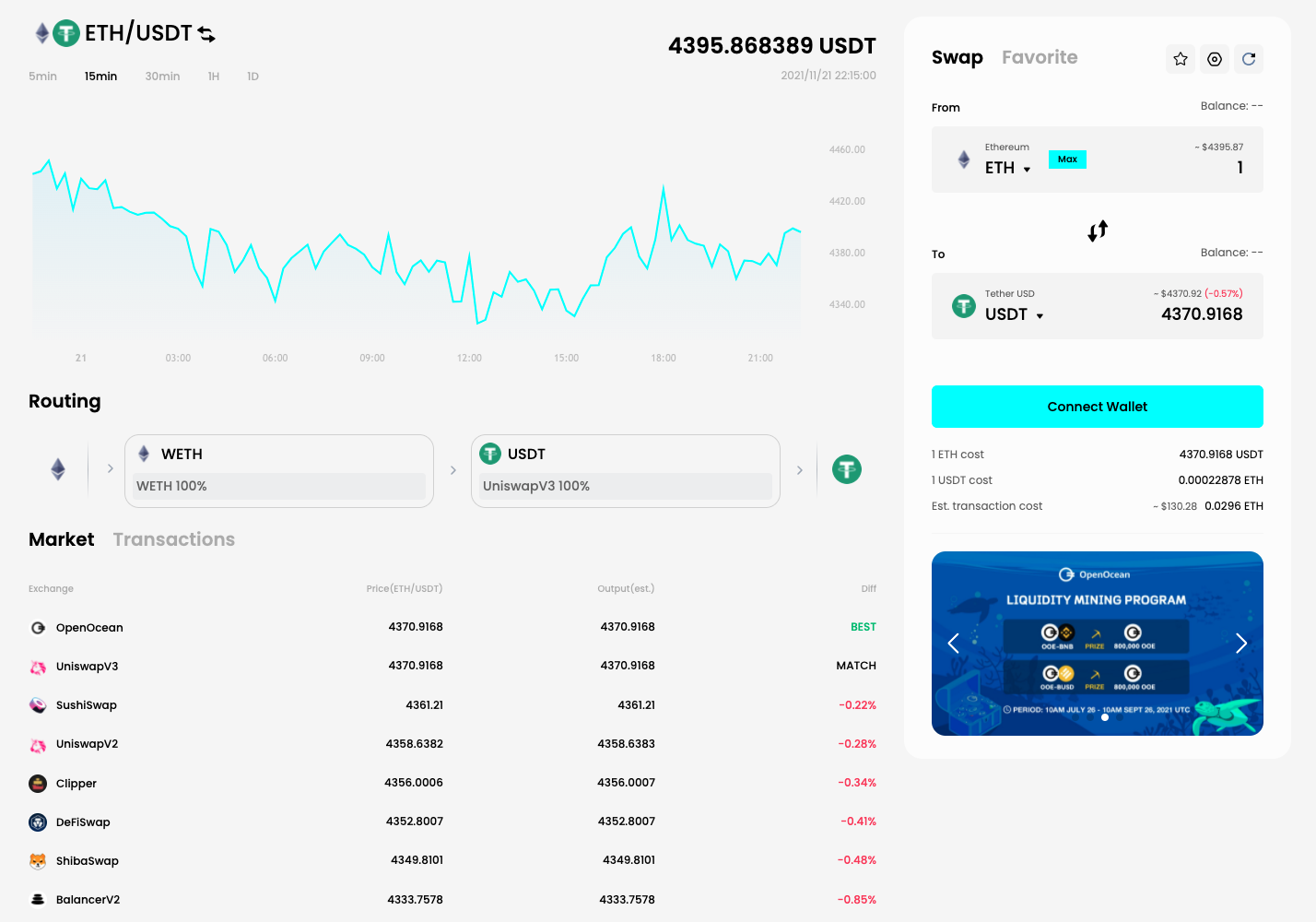
The interface includes useful visualizations of the routing for each asset swap. For larger orders, the routing can become quite complex. The example below illustrates the advantages of using an aggregator compared to manually executing all individual trades.

To access centralized exchanges like Binance, the "Go Advanced" version of OpenOcean is required. In this version, DEX and CEX are displayed side by side. The price differences between CEX and DEX are also shown. To access centralized exchanges, registration on OpenOcean is required. In addition to market orders, centralized exchanges also offer limit orders. This feature is not yet available for trading on decentralized exchanges.

Looking Ahead
As mentioned earlier, OpenOcean currently only offers asset trading services, but the roadmap emphasizes that more is in the works. OpenOcean will continue to upgrade its algorithms and expand to more networks. Limit orders are also planned to be launched soon, and OpenOcean will begin offering aggregated derivatives. Additionally, a SaaS product will be introduced to allow for automated arbitrage between centralized and decentralized exchanges.
Looking to 2022, OpenOcean plans to launch futures aggregation trading and margin products. Cross-chain aggregation will become available, allowing for cross-chain trading. Over time, OpenOcean will also integrate other financial products, such as lending, insurance, and other investment services. Its goal is to launch a smart asset management platform for financial solutions in 2023, or in other words, OpenOcean will become a one-stop shop for centralized and decentralized financial solutions.
OOE Token
The OOE (OpenOcean Ecosystem) token will be an important component of OpenOcean. The token has two uses: utility and governance. The utility of the token is expressed through several incentives that token holders receive when participating in the OpenOcean ecosystem. This includes paying gas and transaction fees, earning liquidity mining and trading rewards, and gaining VIP membership and other services. For example, if users want to trade assets across different chains, the OOE token will serve as a means to pay gas fees.
The governance function means that OOE token holders can propose and participate in voting. Voting rights are proportional to the amount of tokens held. OpenOcean has off-chain governance, allowing proposals to be submitted and discussed in designated channels on OpenOcean's Discord. So far, no votes have taken place, and details about the governance structure are still being researched.
The OOE token is minted on Ethereum, with a maximum supply of 1 billion tokens. On July 12, 2021, 78,989,286 tokens were distributed, with approximately 150 million tokens currently in circulation. The remaining supply will be distributed over the next five years according to the following allocations:
- 5.6% allocated to strategic investors over 2 years
- 7.5% for private placements and second-round strategies over 2.5 to 3 years
- 29% for OpenOcean Lab supporting protocol development, onboard ecosystem partners, community developers, and bounty programs over 3 years
- 33% for liquidity mining over 5 years
- 7% for managing community incentives, marketing, and events for the ecosystem foundation over 3 years
- 15.9% for team and advisors over more than 3 years
- 2% for early users, allocated at the time of token issuance
The OOE token is listed on several exchanges, including KuCoin and Gate.io. The circulating market cap of OOE is approximately $40 million, while 1inch has a market cap of about $780 million, making it the current market leader among DEX aggregators.
OpenOcean's Driving Force
Since its launch, OpenOcean has seen trading volumes of approximately $3 billion, with nearly 400,000 addresses and over 1.4 million transactions. Most of OpenOcean's trading volume comes from asset swaps on BSC (about $2.8 billion), with similar numbers for addresses and transactions. In recent months, Polygon and Avalanche have also begun to attract larger trading volumes and numbers. For Avalanche, the trading volume in November was $70 million, with over 8,500 transactions, while the trading volume in October was $13 million, with 2,900 transactions. OpenOcean also added support for Fantom in October, with that network's trading volume reaching $50 million that month, and November's trading volume continued to grow steadily, reaching $107 million. In terms of centralized exchanges, OpenOcean's registered users have just surpassed 11,500, with a total trading volume of $2.5 million.
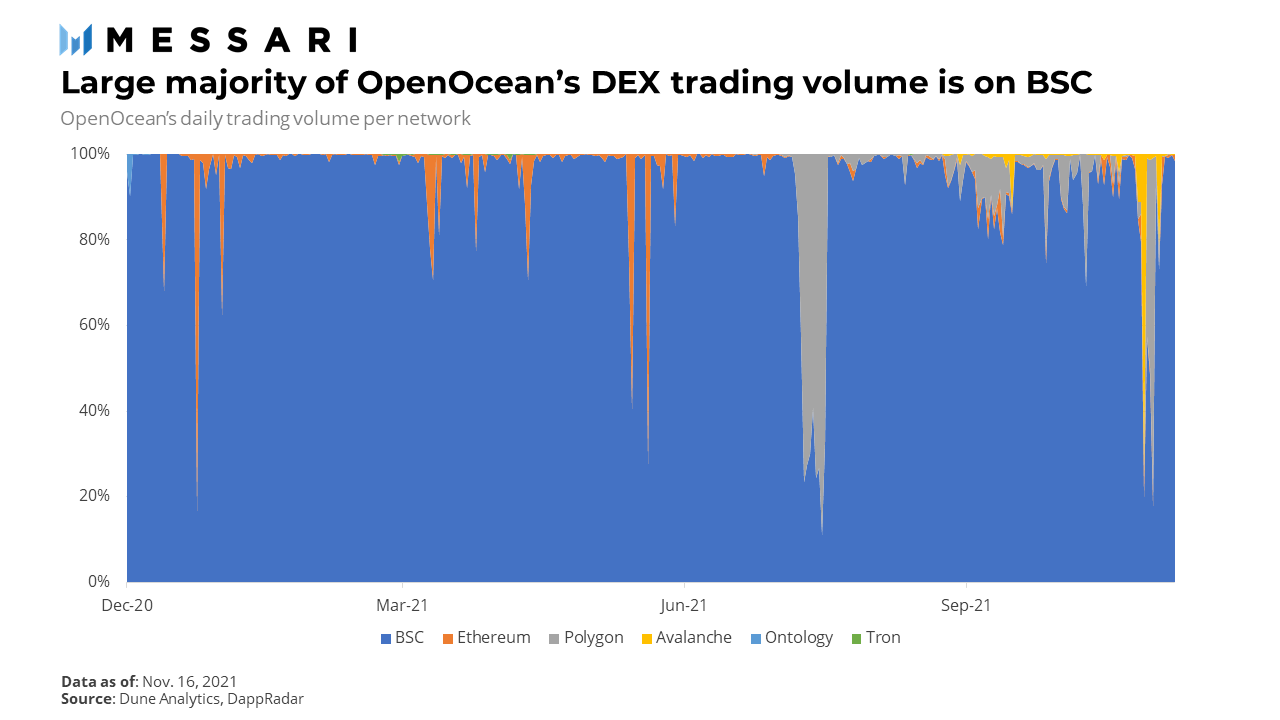
OpenOcean Competitor Analysis
There are several aggregators in the market, with 1inch, Matcha, and ParaSwap being the most well-known. These aggregators are active across multiple chains, although not as extensively as OpenOcean.
One key distinction for OpenOcean is that it provides access to both centralized exchanges and numerous decentralized exchanges. Additionally, OpenOcean appears to be generous in terms of slippage. If positive slippage occurs, OpenOcean users will receive 100% of the benefits, and the protocol plans to subsidize trading-related costs using OOE tokens.
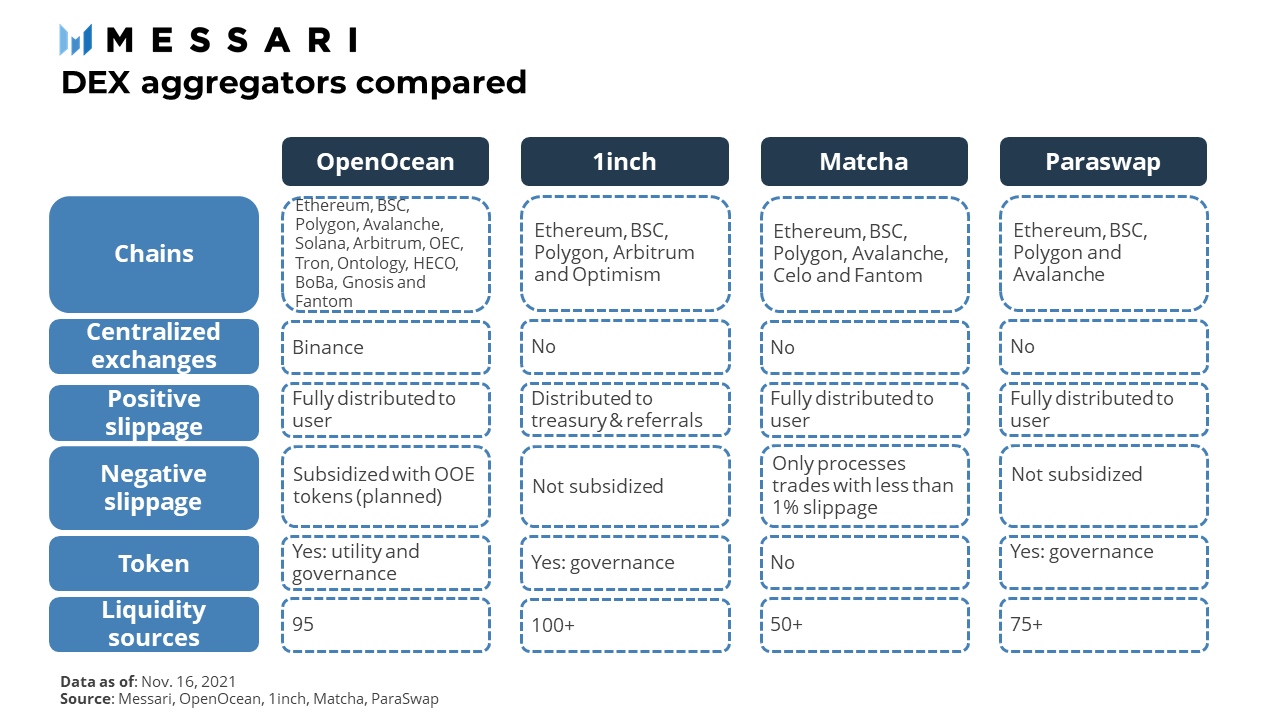
Among aggregators, 1inch is clearly the market leader in trading volume, having nearly $15 billion on Ethereum alone in October. While 1inch is far ahead in the market, competitors like Matcha and Paraswap are slowly catching up. In October, these two aggregators had trading volumes of approximately $350 million and $200 million, respectively. Other statistics, such as user numbers and transaction counts, also indicate that 1inch is the market leader.
At the same time, OpenOcean has a small appeal on Ethereum. In contrast, OpenOcean's trading volume on Ethereum in October was just over $1 million. March and May were OpenOcean's most active months, with monthly trading volumes well above $10 million. Compared to 1inch, Matcha, and ParaSwap, OpenOcean also has room for improvement in terms of wallet and transaction numbers.
Fairly speaking, OpenOcean's volume mainly comes from other chains like Binance Smart Chain and Polygon. However, 1inch is also a major DEX aggregator on these blockchains. 1inch's total trading volume exceeds $12 billion, with over 115,000 users monthly on Binance Smart Chain. In comparison, OpenOcean's figure is around $2.8 billion. For Polygon, 1inch's trading volume has surpassed $7.4 billion, while OpenOcean stands at $50 million.
One potential way to increase usage is to show users how OpenOcean's routing algorithm works. For example, whenever OpenOcean quotes a trade, it could display comparisons with other DEXs and DEX aggregators. Demonstrating to users that OpenOcean indeed offers the best prices should help improve traction.
Long-Term Competition
The competition between exchanges and aggregators is fierce. Users are not necessarily loyal, primarily concerned with getting the best prices. Therefore, aggregators compete by developing superior routing algorithms. As part of the V2 release in October 2021, OpenOcean conducted performance tests. In 4,500 transactions completed on Binance Smart Chain, OpenOcean provided better prices than 1inch and ParaSwap in 60% of cases. For trades on Ethereum, OpenOcean "provided better returns compared to other DEX aggregators in more cases." However, the landscape is ever-changing, and aggregators will continue to upgrade their algorithms to outpace competitors. It ultimately becomes a long-term race.
Another question is to what extent the OOE token can capture the value created by OpenOcean. Aggregators play a crucial role in bridging fragmented liquidity, but as competition intensifies, it remains unclear how aggregators will make money in the long run. Therefore, OpenOcean's intention to offer additional (premium) financial services in the future makes sense.
Although OpenOcean still lags behind market leaders by a certain margin, it is seizing a massive opportunity by providing users with single access to both DeFi and CeFi markets. OpenOcean remains a young project in a competitive field, with an ambitious roadmap. Time will tell if it can realize its vision of becoming a one-stop shop for total liquidity.



